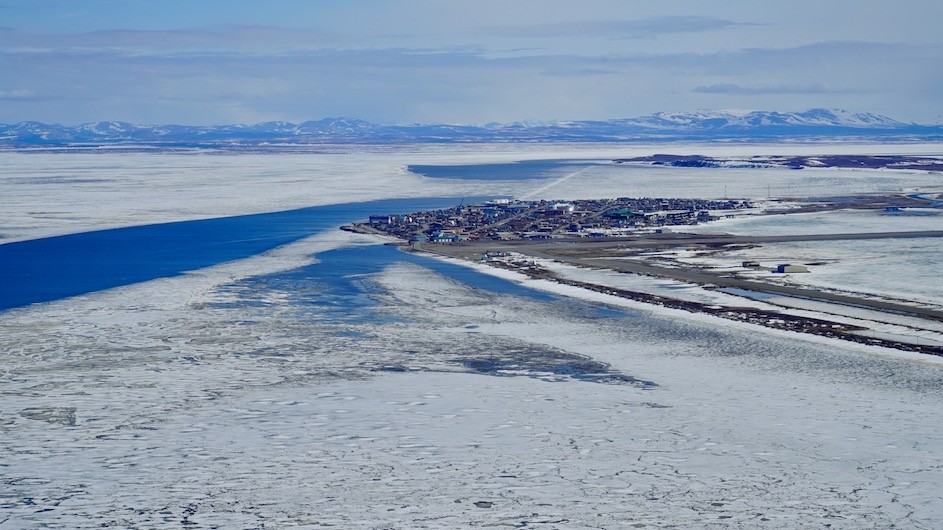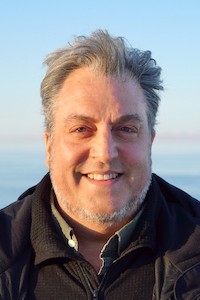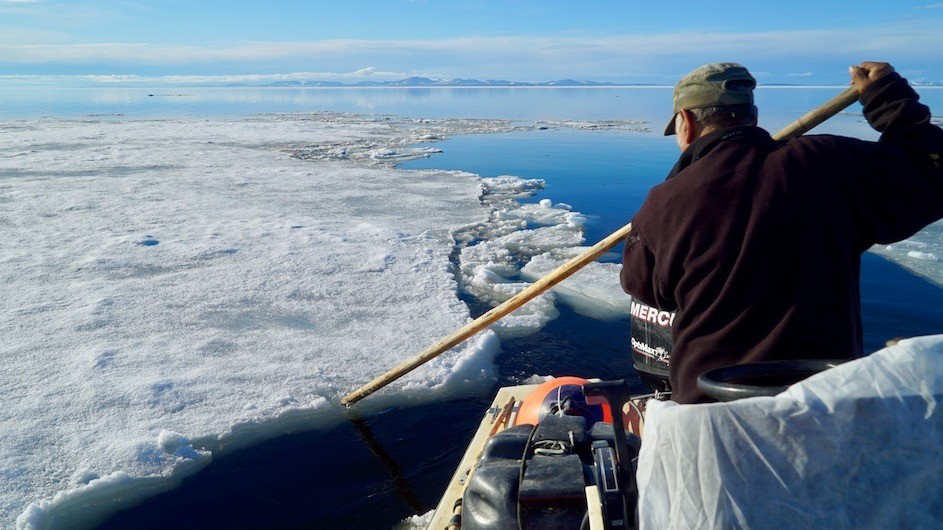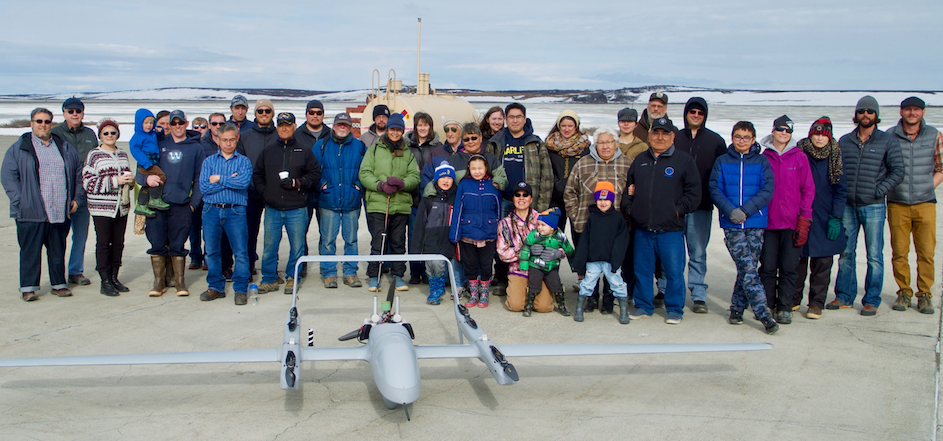Tracking the Impact of Climate Change in Alaska
The sea ice is rapidly melting off the northwest coast of Alaska, endangering the Indigenous population. Lamont-Doherty Earth Observatory researchers joined forces with the local community to understand how climate change is affecting their region.

Taking Action is a Columbia News series that seeks to showcase efforts from around the university that rely on academic knowledge to tackle real-world challenges in a purposeful way.
For some, climate change is still an abstract concept. They might experience hotter summers and strange weather patterns, but much of their lives are relatively unchanged. For others, like the Indigenous community off of Kotzebue Sound in northwestern Alaska, life is drastically different. The community’s traditional way of life and subsistence living, which depends on hunting bearded seals (ugruk), is being threatened by rapidly melting sea ice coverage and a reduced hunting season.
Since 2016, a multidisciplinary team led by Christopher Zappa (SEAS‘92) from the Lamont-Doherty Earth Observatory (LDEO) has been working with community elders to study the changes in sea ice and marine life in the Kotzebue Sound. This unique community-based research project, Ikaaġvik Sikukun (Iñupiaq for ice bridges), combined decades of knowledge from the elders with data science, the use of Unoccupied Aerial Vehicles, and documentary filmmaking to understand the impact that climate change has had on the area and the Indigenous way of life.
Columbia News spoke with Zappa to learn more about how he and his team from LDEO worked with the locals, what they hope to learn from their data gathering, and how community-engaged projects can be a new model for scientific research.
Q: How did Ikaaġvik Sikukun come about?

A: A program manager from the Gordon and Betty Moore Foundation that funded my previous work, teamed up with another group who worked with Arctic Indigenous communities. They came up with the basic idea for a project: the climate is changing, sea ice is changing, and many Arctic communities rely on sea ice, both for subsistence and their traditional way of life. Would our combined knowledge and technologies be able to answer new questions that haven’t been asked before?
Q: Unlike many other research projects, you started your project with the input from the local community. How did that work? How did you gain their trust?
A: We began Ikaaġvik Sikukun about five years ago. At the start of it, we visited the village of Kotzebue over a whole year through four or five trips while we developed the project with the Elders Advisory Council, a group of community leaders. It was a community-based approach to research design, which is a departure from hypothesis-driven research.
This approach began with community engagement. We didn't just go in with our research questions already mapped out. An instant trust level developed because we made that clear up front. Often, researchers may visit local communities to do their research, and then they leave. We do acknowledge that we have our specific expertise and our approach to studying the climate and weather.
Taking Action
That was part of the community discussions about what we have to offer, but we knew our focus was to conduct the collaborative research from the community perspective. Similarly, local and Indigenous knowledge is critical to the research program that was developed to address the communities’ research questions. This community-based model was the first of its kind and ensures that the observing plan meets the community, science, and legacy goals of the project. This approach grounds the work in the interests of the local stakeholders.
Q: What knowledge did you gain from the Elders Advisory Council? How did it impact your research?
A: We learned that their traditional hunts, specifically hunting the ugruk, are vital to their subsistence and Indigenous way of life. The elders were very concerned how the seasons were becoming shorter, which made them have to adapt their hunt around the changing sea ice conditions.
The community made us aware of the importance of the river and ocean interaction, and how the ice behaves around this area. The beginning and the duration of the hunting season is determined when the sea ice and the land-fast ice break up. After the exchange of knowledge with community elders, we designed our experiment and observations around studying this interaction. The Elders Advisory Council played multiple roles as knowledge holders and enablers of new knowledge.

Also, while our team observed the ice receding in real time, the Native Village of Kotzebue have kept logs of the ice conditions for decades. That data were integral to understanding the impact of climate change on the region, the sea ice pack, and Indigenous hunting opportunities.
Q: What was your favorite part of this project?
A: I just love doing field research in general. I'm an oceanographer by training—I love the adventure. Going up to the Arctic was another fun adventure.
But for this project, it was specifically that we were welcomed into the community. On one of our first trips to Kotzebue, we were served caribou burgers, which were amazing. Connecting with the community felt very special and for me, was a next level of enjoyment of going into the field. The person-to-person connections and friendships that developed, seeing the impact that climate has directly on traditions—that’s powerful.

Q: You and your team are near the end of your five-year project. What insights do you hope to gain from your research?
A: From a science perspective, we want to understand the impact of climate change on this area. Why was the ice so far into the sound? Why wasn't any sea ice there at the time it usually is? Why did it break up early? Once we fully analyze our data, we hope we can answer these questions and more, which will lead to greater understanding of why we need to mitigate the effects of climate change.
From the local perspective, we want to understand what impact the receding ice has on their community’s ugruk hunts. We observed that climate change affected how the receding ice made it physically more challenging for the community members to hunt on the ice. We definitely saw that the hunting season is becoming much shorter. These factors made hunting the seals, which the community needs for subsistence living, general well-being and the Indigenous way of life, much more difficult. I hope this co-production of knowledge gained during Ikaaġvik Sikukun can provide useful information for the community to have continued successful seal hunts.
Q: How do you think that you can replicate this type of project for other communities?
A: That’s a very good question. A few colleagues and myself, are figuring out how to do that. The first thing we want to do is go to communities where other river systems are important. We may start in the Yukon Delta or the Mackenzie River Delta. Our community-based research approach begins with developing and establishing relationships in these communities. Then we’ll be able to build on those relationships and develop the board of advisory council of elders, like we did in Kotzebue. Every community may have different concerns or research questions that are completely different from Kotzebue, such as fishing and food security. However, we feel that our community-based approach is adaptable to wherever we conduct our next project.